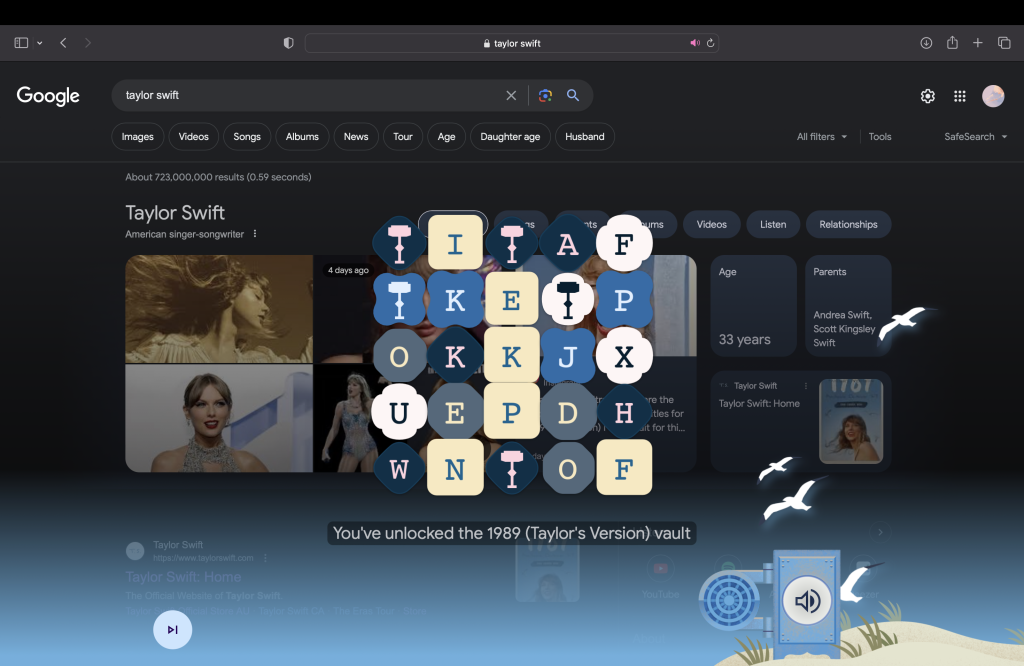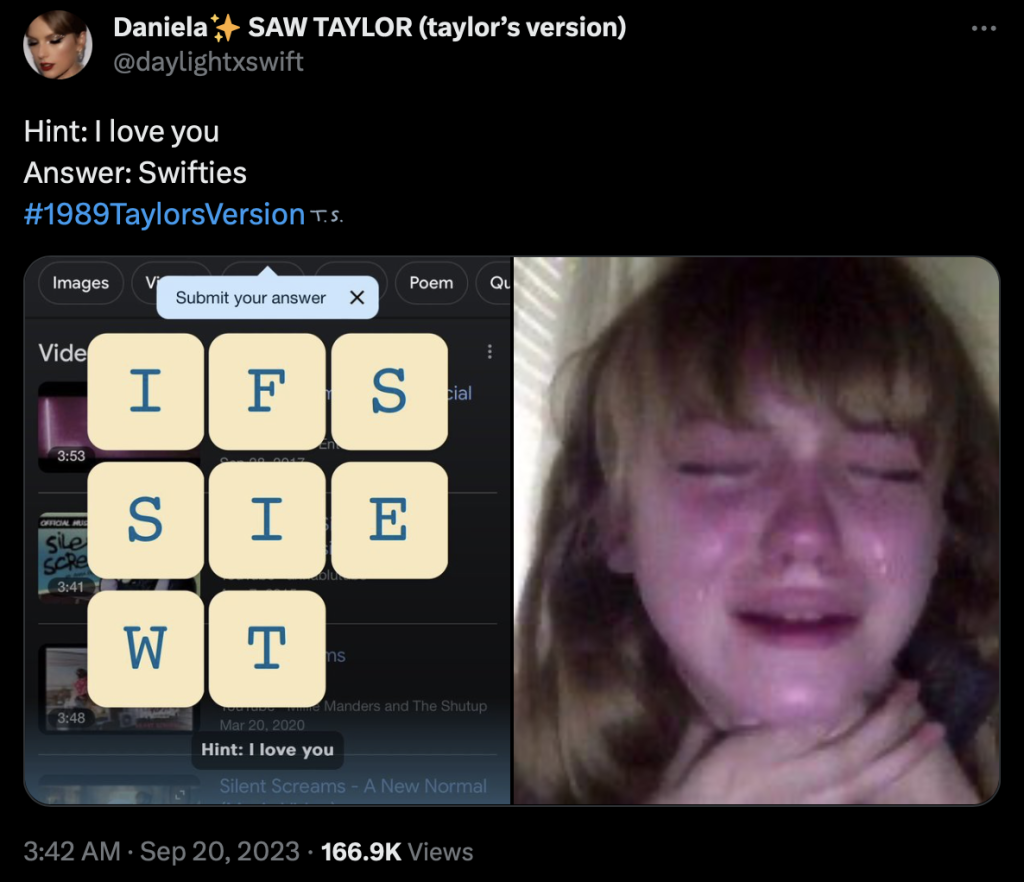“Did you hear my covert narcissism I disguise as altruism like some kind of congressman?” – Anti-Hero But in the best way possible? This is how Taylor Swift harnessed the Power of Internet Communities, Fan Labour, and Altruism in the Music Industry
Feature Image: “Taylor Swift” by Eva Rinaldi Celebrity Photographer is licensed under CC BY-SA 2.0.
Taylor Swift’s digital empire exemplifies a groundbreaking transformation in the music industry, where the internet, community, fan labour and altruism have converged to reshape the career trajectory of an artist. Taylor Swift’s recognition of the evolving dynamics of fan engagement enabled her to foster a dedicated online fan community, the “Swifties”, whose fan labor generates immense buzz and excitement around her music. Her commitment to altruistic actions amplifies brand beyond music, deepening fan loyalty. This innovative digital marketing strategy, rooted in genuine engagement, has translated into record-breaking commercial success, cementing her influence in the cultural landscape and providing crucial lessons for artists seeking to thrive in the digital age of music marketing.

“Taylor Swift” by Eva Rinaldi Celebrity Photographer is licensed under CC BY-SA 2.0.
Argument 1: Altruism as a marketing strategy – fostering a sense of goodwill and reciprocity amongst her fan base (based on “The Networked Information Economy” by Yochai Benkler)
In an era characterized by the digital transformation of the music industry, Taylor Swift stands as a prominent example of an artist who has harnessed the power of online communities to not only fuel her marketing efforts but also create an enduring sense of belonging and shared identity among her fans, affectionately known as Swifties. Swift’s journey into the digital realm began with her recognition of the evolving dynamics of fan engagement. Instead of merely treating social media as a promotional tool, she made it a platform for genuine connection and interaction with her audience. Through regular and authentic updates on platforms like Twitter, Instagram, and Tumblr, Swift provided her fans with unprecedented access to her life, her creative process, and her thoughts. This transparency established a unique rapport between artist and fan, where fans felt not just like passive consumers but active participants in Swift’s artistic journey.
Swift’s encouragement of fan-driven content creation has further solidified her status as a leader in artist-fan engagement. The Swifties, fueled by their passion and admiration for Swift’s music, have become more than just passive admirers; they have evolved into active contributors to her digital presence. Fans eagerly create fan art, cover her songs, analyze her lyrics, and develop intricate fan theories. This fan labor serves as a dynamic and cost-effective marketing tool, extending the reach and impact of Swift’s brand.
However, it’s not just about marketing. Taylor Swift’s genius lies in her ability to foster a sense of belonging and shared identity among her fans. Swifties form a tight-knit global community bound by their love for her music and their admiration for her values and advocacy. Through Swift’s interactions and her willingness to acknowledge fan contributions, she has fostered an environment where fans feel valued and heard. This sense of belonging transcends geographical boundaries, uniting fans from diverse backgrounds in a shared passion.
This shared identity and sense of community have not only deepened the emotional connection between Taylor Swift and her fans but have also magnified her influence in the digital sphere. Swifties rally around her music releases, trending hashtags, and creating viral challenges, all of which amplify her visibility and impact on social media platforms. In essence, Swift has leveraged her online communities not only to market her music but also to co-create her digital narrative with her fans, establishing a symbiotic relationship that has redefined artist-fan engagement in the digital age.
The Usage of Google to market her album
Taylor Swift’s re-recorded album, “1989 (Taylor’s Version),” released its secret treasure trove of Vault Tracks through an inventive puzzle-solving experience, elevating her brand to new heights in a spectacular convergence of technology and fan involvement. The mysterious revelation of this music required fans to solve 33 million puzzles, all arranged utilising the capabilities of Google’s search engine. This creative technique cleverly combined the force of fan passion and cutting-edge technology.

Screenshot/recording taken from Google
Fans were inspired to begin on a digital voyage by simply searching Taylor Swift’s name, which launched a series of puzzles that required the correct answers to advance. This interactive campaign, which had 89 puzzles in total, engaged Swift’s devoted audience and significantly increased her online presence through repeated Google searches for her name and lyrics. This innovative method offers an exciting case study of the convergence of technology, fan participation, and artist-brand improvement, expanding the bounds of modern fan engagement in the music industry.

@/daylightxswift on Twitter
Taylor Swift’s interactive marketing methods expanded beyond “1989 (Taylor’s Version)” to albums such as “Fearless (Taylor’s Version)” and “Red (Taylor’s Version),” though without the significant use of Google-powered puzzles. Nonetheless, these campaigns were equally captivating. Swift maintained her audience’s interest by incorporating interactive components into her album releases. These projects retained the participatory spirit while reaching a different size than the Google-powered puzzles, whether through virtual scavenger hunts, social media challenges, or special fan events. Swift’s balanced approach reinforced her dedication to cultivating a strong artist-fan relationship while also demonstrating her agility in adjusting marketing strategies to each album’s distinctive narrative and themes.
Counter Argument: critics may argue that it can also be seen as a calculated PR move. may pander and cater to her fanbase while only thinking of how this will benefit her
Castells, M. (2001). The Internet Galaxy: Reflections on the Internet, Business, and Society. The Culture of the Internet (pp. 36-63). Oxford University Press. https://doi.org/10.1093/acprof:oso/9780199255771.001.0001
Garcia, T. (2023, September 20). Taylor Swift Uncovers Five ‘1989 (Taylor’s Version)’ Vault Songs. Variety. https://variety.com/2023/music/news/taylor-swift-four-1989-taylors-version-vault-songs-titles-1235729702/
Pawel Popiel, The Tech Lobby: Tracing the Contours of New Media Elite Lobbying Power, Communication, Culture and Critique, Volume 11, Issue 4, December 2018, Pages 566–585, https://doi.org/10.1093/ccc/tcy027
Veloso, L. (2023, September 20). Taylor Swift’s 1989 Vault Songs Revealed After Fans Solved 33M Puzzles. Stylecaster. https://stylecaster.com/lists/taylor-swift-puzzle/



